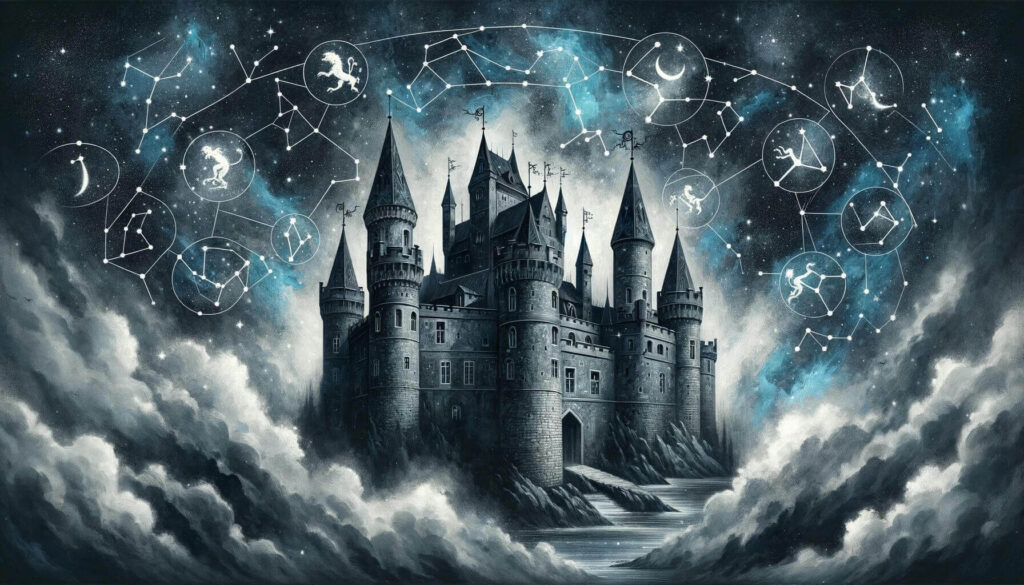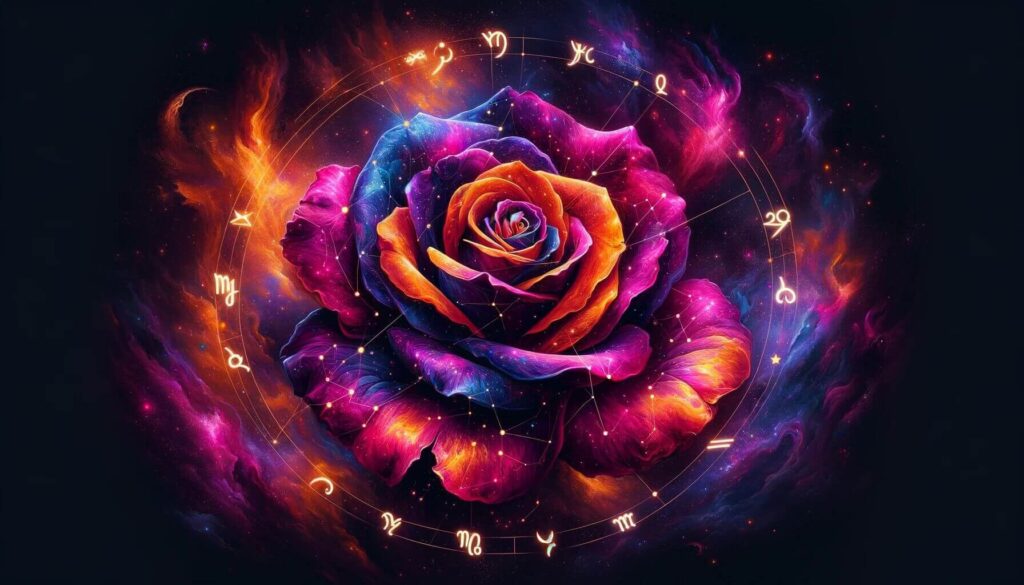



Prompt Engineering Techniques and Best Practices
In the realm of AI-generated art, the emerging field of “prompt engineering” is becoming an essential skill. This practice involves crafting detailed textual instructions that guide an AI, like OpenAI’s DALL-E, to produce images that align with the creator’s vision. Here, we’ll explore effective techniques and best practices for prompt engineering, using a series of cosmic-themed images as examples.
Understanding the AI’s Interpretation
AI models like DALL-E interpret prompts literally. To get the desired outcome, you must be explicit about what you want. For instance, when creating images that portray subjects through zodiac symbols with specific color themes, such as “cosmic teal and brown” or “cosmic orange and purple,” it’s important to specify not just the colors but also the theme and how these elements should interact.
1. Clarity and Detail
Begin with a clear, precise description of the primary subject. For instance:
- “A cosmic-themed portrayal of Marina Bay Sands, infused with teal and brown hues.”
This prompt tells the AI exactly what to focus on and the color scheme to use. It also incorporates the theme (“cosmic”) to guide the aesthetic of the image.
2. Incorporation of Themes
Incorporate themes and motifs by describing how they should be represented:
- “…depicted through a collage of zodiac symbols, giving an astronomical and mystical feel.”
Here, the inclusion of “zodiac symbols” and “astronomical and mystical feel” directs the AI to embed these elements into the image in a way that’s thematically coherent.
3. Use of Analogies and Metaphors
Employ analogies or metaphors to convey abstract concepts. For example:
- “The symbols are artfully integrated into the building’s design, with constellations subtly forming its distinctive silhouette.”
The metaphor of “constellations forming a silhouette” helps the AI to understand the artistic integration desired.
4. Emphasis on Composition
Specify the composition of your image. For example, if you want a wide (3:2 aspect ratio) image, you should state this requirement:
- “…against a backdrop that suggests the vastness of space.”
This part of the prompt suggests that the image should have a spacious background, which is a subtle hint at the desired composition.
5. Conveying Mood and Style
Clearly articulate the mood or style you’re aiming for:
- “The image has a raw, ethereal quality that captures the marriage of astrology and architecture.”
Words like “raw” and “ethereal” inform the AI about the desired texture and mood of the final image.
6. Iteration and Refinement
Use feedback loops. If the first image isn’t quite right, refine your prompt based on the output and try again. This iterative process helps hone in on the perfect combination of elements to achieve the desired result.
7. Ethical Considerations
When crafting prompts, it’s also important to consider ethical implications. Avoid prompts that could lead to generating inappropriate or offensive content. Diversify depictions where relevant and be mindful of biases.
Conclusion
Prompt engineering is as much an art as it is a science. By employing clear, detailed descriptions, integrating themes and motifs, using metaphors, specifying composition, and iterating on feedback, creators can guide AI to produce works that are both visually stunning and deeply aligned with their creative vision. The cosmic-themed images provided are just one example of what’s possible when these best practices are applied. As we continue to explore the capabilities of AI in art, prompt engineering will undoubtedly become a key skill in the digital creator’s toolkit.
